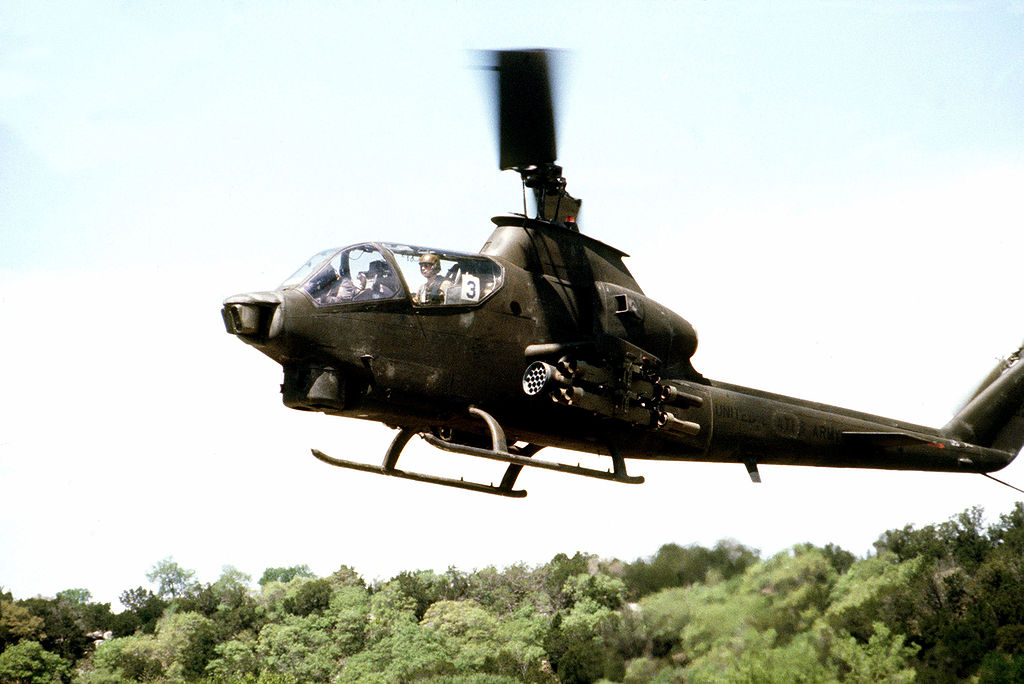‘This is the standard which is better: an AK-47 or M-16 type question,’ Joe Difrancesco, former AH-64 Apache Pilot in the US Army.
The AH-1 Cobra is a two-blade rotor, single-engine attack helicopter manufactured by Bell Helicopter. It was developed using the engine, transmission, and rotor system of the Bell UH-1 Iroquois. A member of the prolific Huey family, the AH-1 is also referred to as the Huey Cobra or Snake.
The AH-1 was the backbone of the US Army’s attack helicopter fleet but has been replaced by the AH-64 Apache in Army service. Upgraded versions continue to fly with the militaries of several other nations. The AH-1 (AH-1W Super Cobra and AH-1Z Viper) twin-engine versions remain in service with the US Marine Corps (USMC) as the service’s primary attack helicopter.
But what are the differences between Cobra and Apache attack helicopters? And which one is better?
‘This is the standard: which is better: an AK-47 or M-16 type question,’ says Joe Difrancesco, a former US Army AH-64 Apache pilot, on Quora. ‘While I’ve only flown AH-64s, I have extensive experience with AH-1s from joint operations. Both systems may engage the same target, but both come at it from a different series of requirements.
‘From a logistics standpoint, the AH-1 is hands down the winner. The AH-1 has 84% parts commonality with the UH-1. This means spare parts can be split between the two aircraft and dramatically reduce logistics efforts to maintain a certain level of readiness.
‘In upgrade speed, the AH-1 also wins. The flash-to-bang time for AH-1 upgrades is much shorter than the AH-64 with respect to the magnitude of the upgrades.’
He continues:
‘From a purpose-built design standpoint, the AH-64 is the best of the two. While upgrades to an existing aircraft may be made to increase functionality, it is difficult to accomplish some requirements without creating a brand-new aircraft. The AH-64 had a fly-by-wire system, heads-up display [in the form of the Integrated Helmet and Display Sighting System, IHADSS], thermal sensors, and advanced weapon processors from inception. Having that foundation allows these buggy systems to thoroughly troubleshoot and the bugs run out over several decades. Additionally, having an internal aircraft network bus from the beginning, the communications protocols are well-known and easy to design new avionics for.
‘So, in closing, it depends on what your requirements are. Can you buy a new Bugatti and the dealer service package? Or can you only afford a Ford GT and use O’Reilly parts to service it yourself? Corollary aside, both are amazing machines and both equally deadly on the receiving end.’
Difrancesco concludes:
‘As a pilot, I would choose the AH-64 over the AH-1 for one tiny reason… Wheels versus skids. Skid aircraft have to hover around airports, while wheeled aircraft can just taxi. For emergencies, the ability to land like an airplane with wheels is awesome. Also, wheeled helicopters play much nicer in crowded airfields, especially with lightweight UAS aircraft with respect to rotor wash. But, again, my petty two cents.’

Photo by U.S. Army and U.S. Marine Corps

